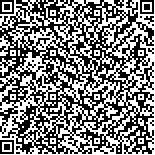王毅,毛容秋,陈青云,陈莹,刘鸿,陈谢.不同运动量对2型糖尿病大鼠肝脏Toll样受体4和核转录因子κ9-B表达的影响[J].中华物理医学与康复杂志,2016,38(8):566-571
扫码阅读全文

|
| 不同运动量对2型糖尿病大鼠肝脏Toll样受体4和核转录因子κ9-B表达的影响 |
|
| |
| DOI: |
| 中文关键词: 运动 糖尿病 大鼠 肝脏 TOLL样受体4 核转录因子9-κB |
| 英文关键词: Exercise Diabetes mellitus Liver Toll9-like receptor 4 Nuclear transcription factor9-κB |
| 基金项目:国家自然科学基金资助项目(30960352) |
|
| 摘要点击次数: 5081 |
| 全文下载次数: 7984 |
| 中文摘要: |
| 目的探讨不同运动量对2型糖尿病大鼠肝脏Toll样受体4(TLR4)和核转录因子9-κB(NF9-κB)表达的影响。 方法将50只SD入选大鼠按随机数字表法分为对照组、糖尿病模型组(DM组)和糖尿病小运动量组(LIE组)、糖尿病中等运动量组(MIE组)、糖尿病大运动量组(HIE组),每组10只。对照组给予普通膳食,其余4组给予高脂高糖膳食并用小剂量链脲佐菌素(STZ)腹腔注射建立2型糖尿病大鼠模型,然后LIE组、MIE组和HIE组分别采用40%、70%和100%的力竭时间进行游泳训练,每日1次,每周6d,共运动干预6周。由于感染和游泳溺水等原因,运动干预结束后大鼠共存活41只,其中对照组10只,DM组8只,LIE组8只,MIE组8只,HIE组7只。运动干预结束后检测大鼠体重、肝重和空腹血糖,采用RT9-PCR技术测定肝脏TLR4和NF9-kB的mRNA表达,采用免疫组化技术测定肝脏TLR4和NF9-kB的蛋白表达。 结果①干预6周后,糖尿病模型各组(DM组、LIE组、MIE组、HIE组)大鼠的体重[(265.00±21.00)、(274.00±22.00)、(286.00±14.00)和(271.00±21.00)g]和肝重[(12.64±1.03)、(12.84±0.85)、(12.65±0.98)和(12.11±0.67)g]显著低于对照组[(567.00±26.00)g体重和(18.04±2.25)肝重g],差异有统计学意义(P<0.05);而糖尿病模型各组大鼠的空腹血糖值[(29.51±3.48)、(23.64±2.39)、(15.45±1.36)和(25.54±2.48)mmol/L]显著高于对照组[(5.77±0.57)mmol/L],差异亦有统计学意义(P<0.05);与DM组比较,糖尿病模型各运动组的体重和肝重变化差异无统计学意义(P>0.05),但各运动组的血糖有不同程度的降低,差异有统计学意义(P<0.05);其中MIE组大鼠的空腹血糖值与HIE组和LIE组相比,降低最为显著,组间差异有统计学意义(P<0.05)。②干预6周后,糖尿病模型各组大鼠的肝脏TLR4和NF9-κB mRNA的表达明显高于对照组(P<0.05);与DM组比较,各运动组均出现不同程度的降低(P<0.05);与HIE组和LIE组相比,MIE组降低最为显著,组间差异有统计学意义(P<0.05)。③干预6周后,对照组肝组织内TLR4和NF9-κB蛋白呈阴性或弱阳性表达,而糖尿病各组大鼠肝脏中TLR4和NF9-κB呈强阳性表达,且表达均明显高于对照组(P<0.05);DM组比较,TLR4和NF9-κB蛋白在各运动组中的表达出现不同程度的降低(P<0.05);与HIE组和LIE组相比,MIE组降低最为显著(P<0.05)。 结论有氧运动能够降低2型糖尿病大鼠的血糖,减少肝脏TLR4和NF9-kB的mRNA及蛋白的表达;中等运动量组的干预效果明显优于小运动量组和大运动量组。 |
| 英文摘要: |
| Objective To investigate the changes in toll9-like receptor 4 (TLR4) and nuclear transcription factor9-κB (NF9-κB) expression in the livers of diabetic rats after exercise at different intensities. MethodsFifty Sprague9-Dawley rats were randomly divided into a control group (NC), a diabetic group (DM), a low intensity exercise group (LIE), a medium intensity exercise group (MIE) and a high intensity exercise group (HIE), each of 10. The control group was given a normal diet. Type 2 diabetes was induced in the others through feeding a high9-fat and high9-sugar diet, as well as injecting a small dose of streptozotocin intraperitoneally. The three exercising groups swam to 40%, 70% and 100% of their exhaustion times once a day, 6 d/w for 6 weeks. Due to infection, drowning and other reasons, only 8 rats in each of the DM, LIE and MIE groups, as well as 7 in the HIE group survived. After the intervention, body weight, liver weight and fasting blood glucose (FBG) were tested. The expression of TLR4 and NF9-κB mRNA in the livers was tested using RT9-PCR technology, and the expression of TLR4 and NF9-κB protein in the liver was tested using immunohistochemistry. ResultsCompared with the NC group, the average body weight and liver weight of the other four groups decreased significantly, while the FBG and the expression of TLR4 and NF9-κB mRNA and protein increased significantly. There were significant differences among the exercise groups with the lowest values in the MIE group. ConclusionSix weeks of aerobic exercise can reduce FBG and the level of expression of TLR4 and NF9-κB mRNA and protein in the liver, at least in rats. The effect of exercise at medium intensity is best. |
|
查看全文
查看/发表评论 下载PDF阅读器 |
| 关闭 |
|
|
|